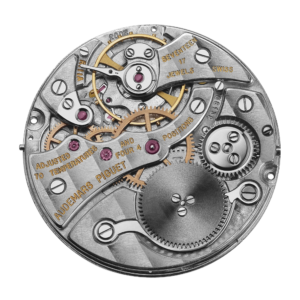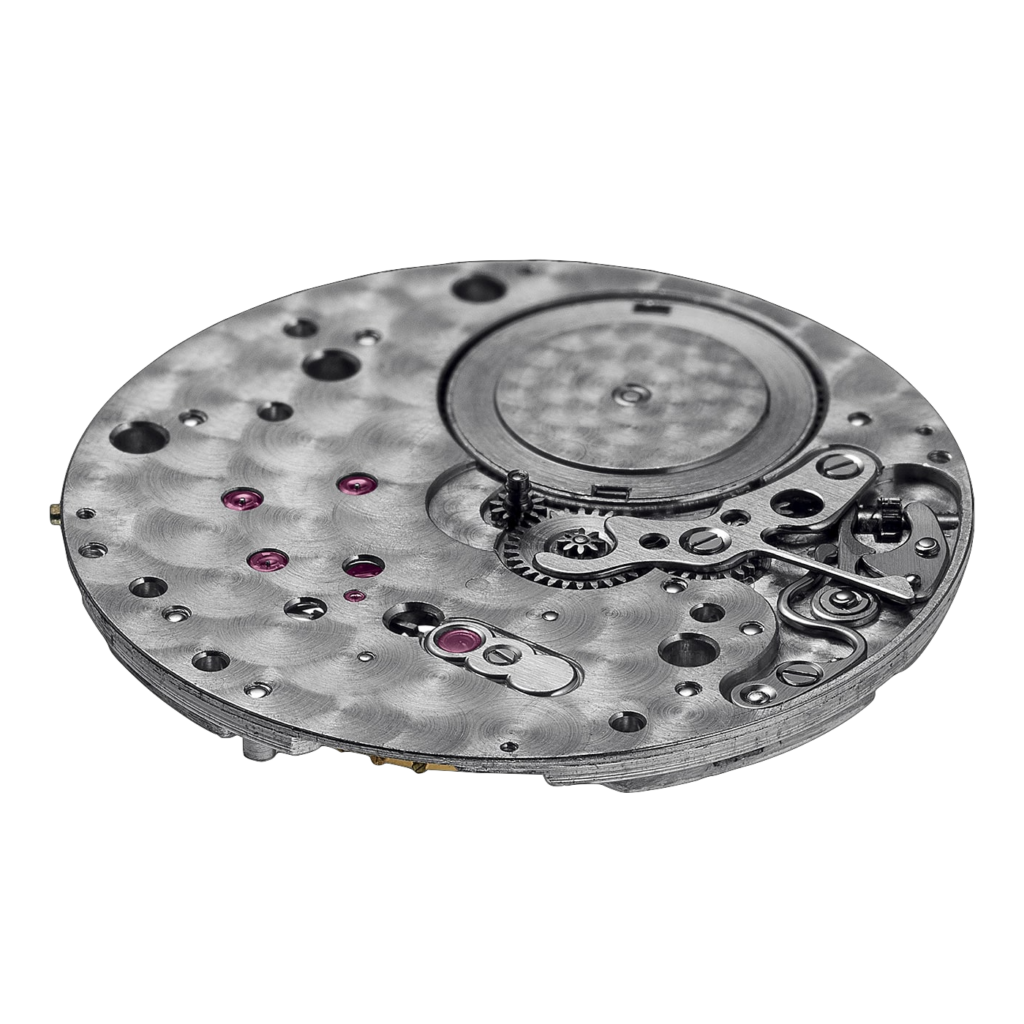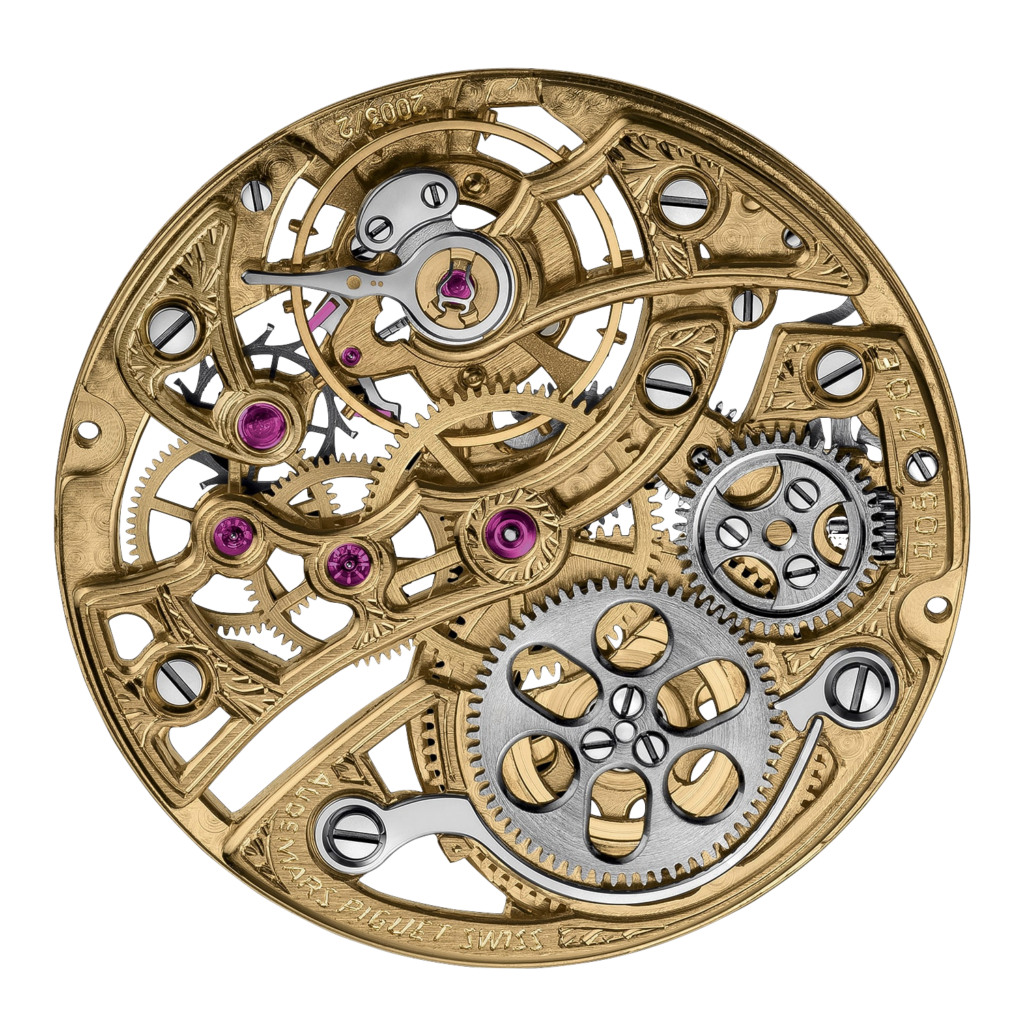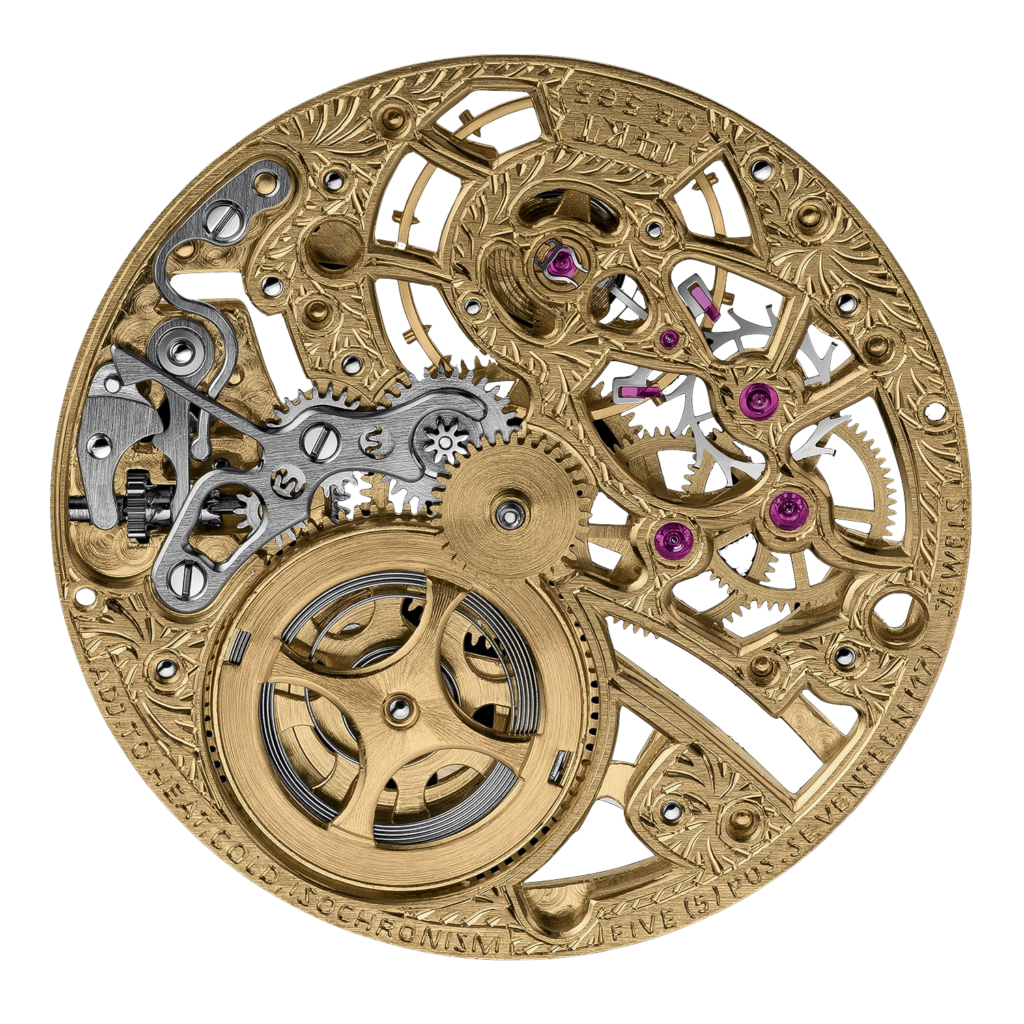 |
Brand: | Audemars Piguet, Jaeger-LeCoultre, Vacheron Constantin | 


|
|---|---|---|---|
| Family: |
Unknown
|
||
| Height: | 1.64 mm | ||
| Jewels: | 17, 18 | ||
| Reserve: | 36 hours | ||
| Frequency: | 18,000 A/h | ||
| Winding: | Hand winding | ||
| Diameter: | 20.80 mm (9.25 ligne) | ||
| Complications: | |||
| Hands: | Central Hour Hand, Central Minute Hand | ||
| Distinguishing Technical Characteristics | |||||||||||
|---|---|---|---|---|---|---|---|---|---|---|---|
 Ultra-Thin Hand-Winding  Hand-Winding  Counter-Clockwise Balance Cock |
|||||||||||
| Production: 1946 – 2003 | |||||||||||
| 1910s | 1920s | 1930s | 1940s | 1950s | 1960s | 1970s | 1980s | 1990s | 2000s | 2010s | 2020s |
Audemars Piguet Cal. 2003 was an ultra-thin hand-winding movement. Developed jointly by LeCoultre, Audemars Piguet, and Vacheron Constantin, Cal 2003 was the smallest movement in the world when it was introduced, measuring just 1.64 mm thick and 20.30 mm in diameter like its predecessor, Cal. 9ML. This had displaced the Piguet 21, which had held that record since 1925. Cal. 2003 remained in limited production until 2003.
There is some controversy about when exactly Cal. AP 2003 and the similar VC 1003 were introduced, with some sources (including Audemars Piguet themselves) claiming 1946, others 1953 (specifically November), and still some simply saying “before 1946.” Regardless, it was based on the prior Cal. 9ML, which Audemars Piguet introduced in 1938. The ultra-thin movement was likely used in watches shown at Montres et Bijoux in Geneva in 1949 and was definitely in production by 1950, when watches using the movement were widely advertised. It improved over Cal. 9ML, which Audemars Piguet introduced in 1938, by reducing the number of bridges, making the movement more rigid. The ultra-thin watches from Audemars Piguet were one of the company’s primary products through the 1950s, representing 75% of models delivered in 1958.
Cal. 2003 was used as a basis for the ultra-thin automatic Cal. 2120 that followed. Designed between 1961 and 1966, Cal. 2120 was introduced to customers in 1967.
In 1996, Audemars Piguet introduced a limited-edition 50th anniversary model with an updated version of Cal. 2003, setting the official date as 1946.
The movement owes its extreme slimness to a flat hairspring, hand winding, a small barrel with 36 hour power reserve thanks to slow 18,000 A/h oscillation, and no shock absorbers. Some examples show 17 jewels while others claim 18. Some sources claim it is 20.30 mm in diameter while others show 20.80.
- Audemars Piguet Cal. 2003
- Jaeger-LeCoultre Cal. 803
- Vacheron Constantin Cal. 1003
In 1999, Audemars Piguet introduced their in-house 9.5 ligne Cal. 3090. This largely replaced Cal. 2003 in the next few years.




